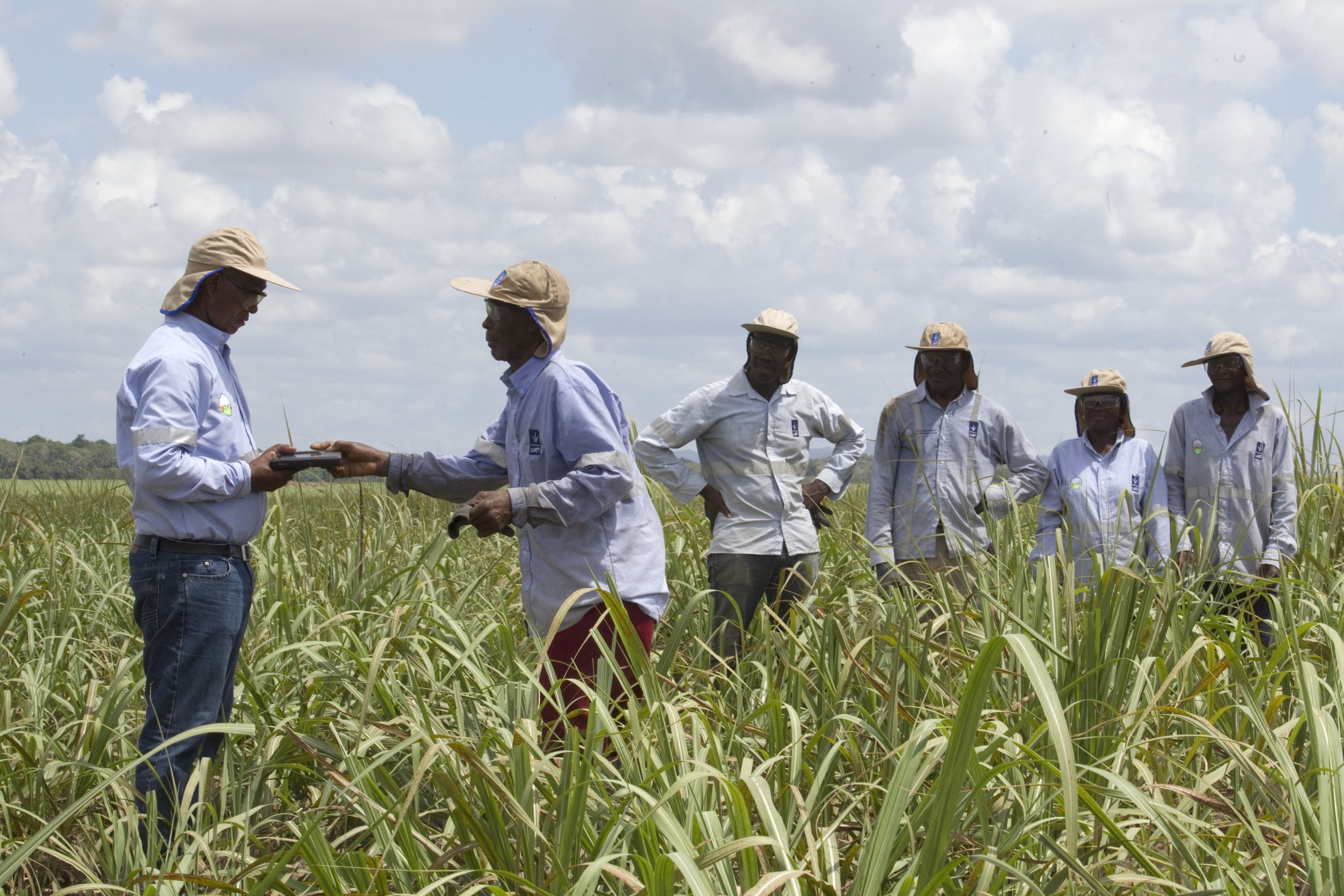19th Century
The Dominican Republic (a former Spanish colony) and Haiti (a former French colony) together share the island of Hispaniola. Despite many common historical experiences, at times the countries have had strained relations over the last two centuries. The sugar industry historically played an important role in the bilateral relationship through the employment of large numbers of Haitian workers, but its significance has declined dramatically with the reduction of the sugar industry workforce.
1900 to 1970s
The Dominican sugar sector began to grow rapidly during the U.S. occupation of the Dominican Republic (DR) from 1916-24. In parallel, the demand for labor also grew. In the 1930s, Haitian cane cutters settled increasingly in the Dominican Republic. From 1952, a series of bilateral agreements, or convenios, between the DR and Haiti were signed, under which Haitian laborers were brought into the DR to work on sugar plantations for specified periods. In addition, undocumented workers from Haiti into the DR routinely crossed the border in anticipation of work in the sector.
Although the convenios required the repatriation of temporary workers to Haiti at the end of each harvest, many remained behind. These resident populations settled in work camps known as bateyes that were originally constructed in the early twentieth century to house temporary contract workers. The camps were never designed to accommodate large numbers of people year-round. Moreover, as families began to settle in these camps, the infrastructure of the bateyes was clearly inadequate and reports of inadequate living conditions began to surface.
The government-operated sugar industry also became associated with substandard working conditions, including underpayment of wages, inadequate medical care, physical abuse and servitude-like conditions. Some laborers reported that they were physically prevented from leaving their places of employment by armed overseers or military personnel.
1980s to 1990s
The conditions in the bateyes attracted international attention in the 1980s. In 1983, a factfinding mission by the International Labor Organization (ILO) investigated these allegations and reported on labor abuses in the sector. For the next two decades, ILO supervisory bodies worked with both the Haitian and DR governments to monitor and remedy the issues.
Even after the last convenio came to an end in 1986, Haitian workers continued to migrate to the DR in pursuit of work. As a result, large numbers of undocumented workers ended up living in the DR. The foreign criticism of the treatment of migrant workers led the DR government to expel Haitians from the DR in 1991 -- a practice which continued through most of the 1990s.
2000s to Present
The migration of Haitian labor into the DR in order to work in the sugarcane fields continues today, even if at much reduced levels, influenced in large part by differences in economic growth and income opportunities between the two countries. According to the World Bank Group, in 2019, the DR’s per capita GDP was US$8,282 while Haiti’s was US$754. In addition, the twin disasters of the January 2010 earthquake and Hurricane Mathew in October 2016 in Haiti led to new surges of Haitian migrants to the DR in search of employment and better living conditions. Today, Haitian migrants work in many sectors in the DR beyond agriculture, including construction, transport and tourism.
In recent years, the three major DR sugar-producing companies, collectively known as the Dominican Sugar Industry (DSI) have continued to make steady progress in improving working conditions in the sugar sector, not only for their own direct employees but also for the employees of their supplying colonos or independent producers. The DSI has put in place additional compliance measures, including modernizing systems to record hours, break periods, and compensation due for piece rate work. Mandatory health and safety training is provided at the beginning of each harvest season, and each worker’s attendance is registered and verified. The program includes training on policies and programs, evacuation and fire, health and occupational safety, and environmental safety. Training on tools, PPE, and hazards is also provided.
An occupational safety and health committee has been established at each company. The committees also review the relevant experience from sugar industries in other countries. The DSI also provides workers and their families with free emergency, primary and referral medical services, and health services under the national health system.
The workers in each of the three companies have established unions. These unions periodically negotiate collective bargaining agreements on behalf of their members, and the agreements are registered with the DR Ministry of Labor (MOL). Further, the DSI companies are all regularly monitored by labor inspectors from the DR MOL. The government has a zero-tolerance policy for child labor and has developed a number of initiatives to eradicate child labor, including establishing a National Steering Committee to Eradicate Child Labor and a child labor unit within MOL.
Over the last decade, the DR government has taken actions to regularize undocumented Haitian migrant workers through a number of different programs and systems. The DSI companies have provided considerable support for the regularization process for their workers, paying fees, providing professional advice on how to submit the paperwork, and arranging for transportation to the offices where documents needed to be submitted. Companies have also supported workers or their family members to apply for regularization under other applicable provisions of DR immigration law.
